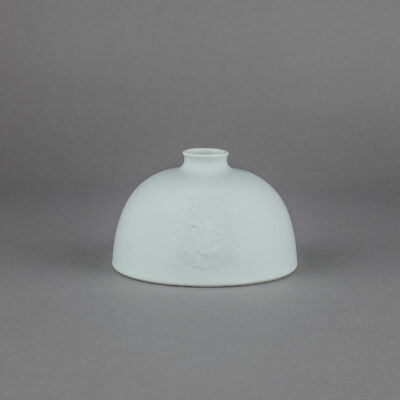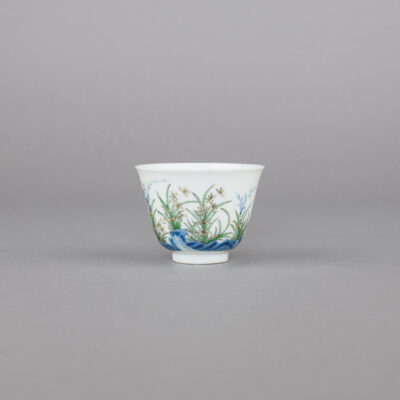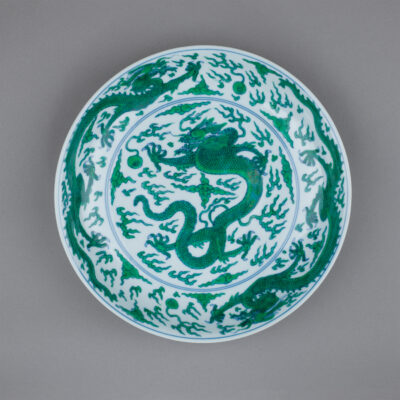4 – M5388
Description
Chinese imperial porcelain white-glazed waterpot of beehive form, taibaizun, with gently flared lipped rim, moulded and carved with three relief archaic style dragon and phoenix medallions, covered overall in an even sweet-white glaze. The base with a six-character mark of Kangxi in underglaze blue and of the period, 1662-1722.
5 ⅛ inches, 12.9 cm diameter of base.
Provenance & Additional Information
- From the collection of Yale Kneeland.
- Purchased from Ralph Chait Galleries, New York, between 1920 and 1940, stock no. 6063.
- Exhibited on loan at the Yale University Art Gallery.
- Sold by Sotheby’s New York in their auction of Fine Chinese Ceramics, Furniture and Works of Art, 1st June 1994, lot 371.
- Sold by Christie’s Hong Kong in their auction of The Imperial Sale & Fine Chinese Works of Art, 26th April 1999, lot 507.
- Included by the Sen-Oku Hakukokan Museum, Tokyo, in its 2006 exhibition, no. 64.
- Mayuyama, Tokyo, 2022.
- Another, exhibited at the Jacksonville Art Museum, 1973, is illustrated by John Ayers in Chinese Ceramics, The Koger Collection, London, 1985, no. 139, p. 167 and was sold by Marchant 30th September 2005 to Nico and Catherine Kairis; sold by Sotheby’s London in their auction of Fine Chinese Ceramics and Works of Art, Property from a European Private Collection, 16th May 2012, lot 175; a further example was sold by Christie’s Hong Kong in their auction of In Pursuit of Refinement: A Legacy of The YC Chen Collection, 29th May 2013, lot 1906.
- Another in the Hong Kong Museum of Art Collection is illustrated by Christina Chu in The Wonders of the Potter’s Qing Ceramics from the Collection of the Hong Kong Museum of Art, Hong Kong, 1984, no. 28, pp. 64/5; another, gift of the B. Y. Lam Foundation (85.131), in the art gallery of the Chinese University of Hong Kong is illustrated by Cheng Xiaozhong and Peter Y. K. Lam in Qing Imperial Porcelain of the Kangxi, Yongzheng and Qianlong Reigns, Nanjing, 1995, no. 3; a further example in the Asian Art Museum of San Francisco is illustrated by He Li in Chinese Ceramics A New Comprehensive Survey, New York, 1996, no. 527, pp. 276/7, collection no. B62 P176; a further example in the Qing Court Collection is illustrated in Monochrome Porcelain, the Complete Collection of Treasures of the Palace Museum, Volume 37, Hong Kong, 1999, no. 111, p. 122.
- These waterpots are known as taibaizun after the poet and scholar Li Bai, who is often depicted leaning against a wine jar of related form.
- Li Bai, (699-762 E.) is one of the most celebrated of Chinese poets. It is said that his mother, whilst pregnant, dreamed of the planet Venus, tai bai jinxing, and so in the past he was known as Li Taibai. His talents emerged at a young age, and as a result he was brought to the court by the Emperor. He was inspired to write by drinking wine. This waterpot is therefore a representation of Li Bai’s wine jar.
- It is rare to find waterpots of this form with a white glaze and raised dragon and phoenix Many
Kangxi imperial examples are known with a peachbloom glaze and incised dragon medallions.










